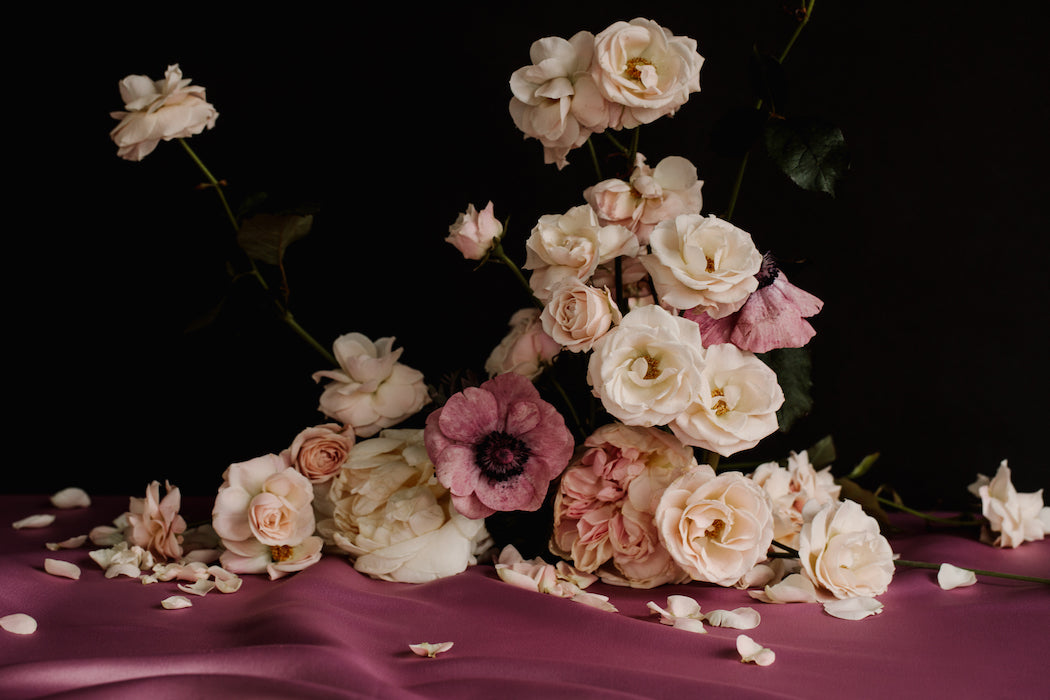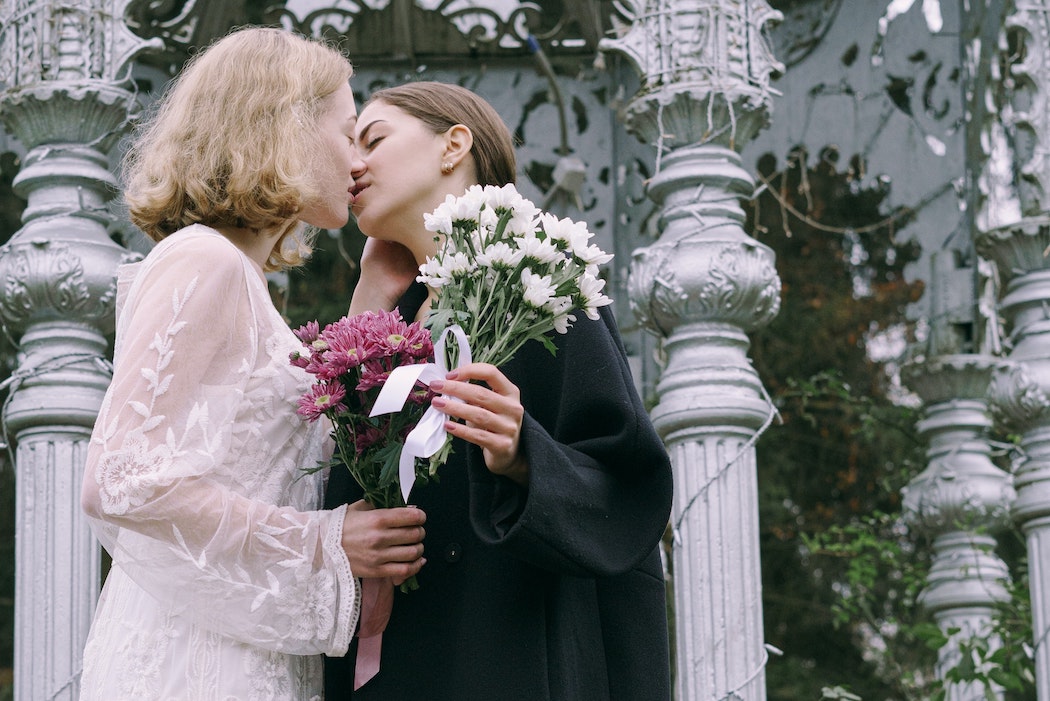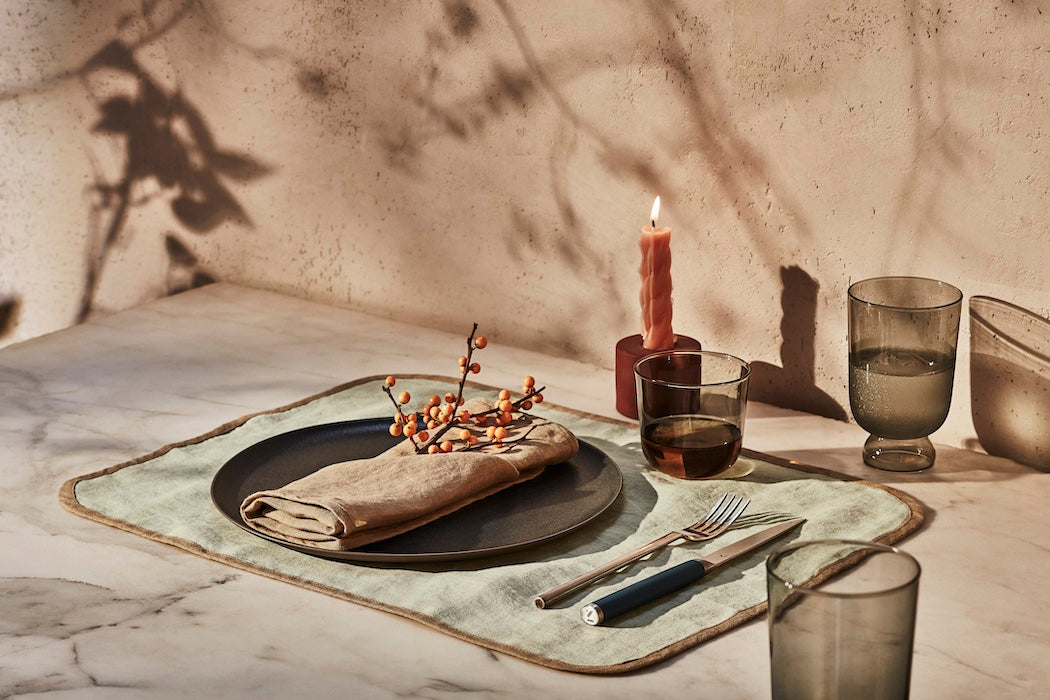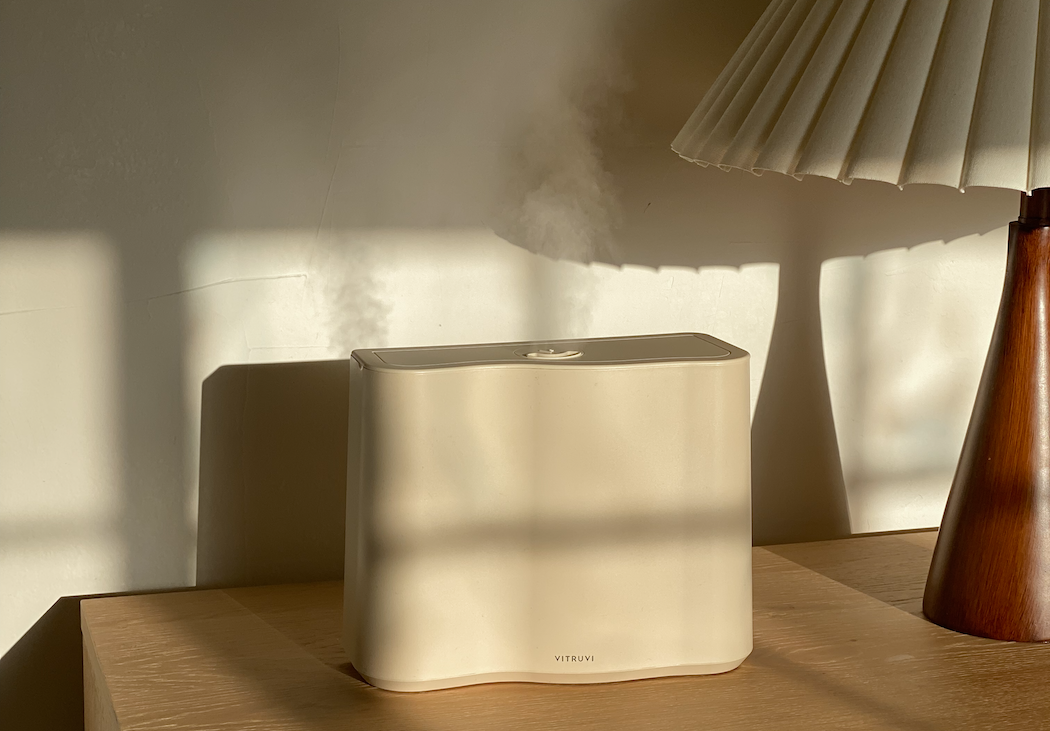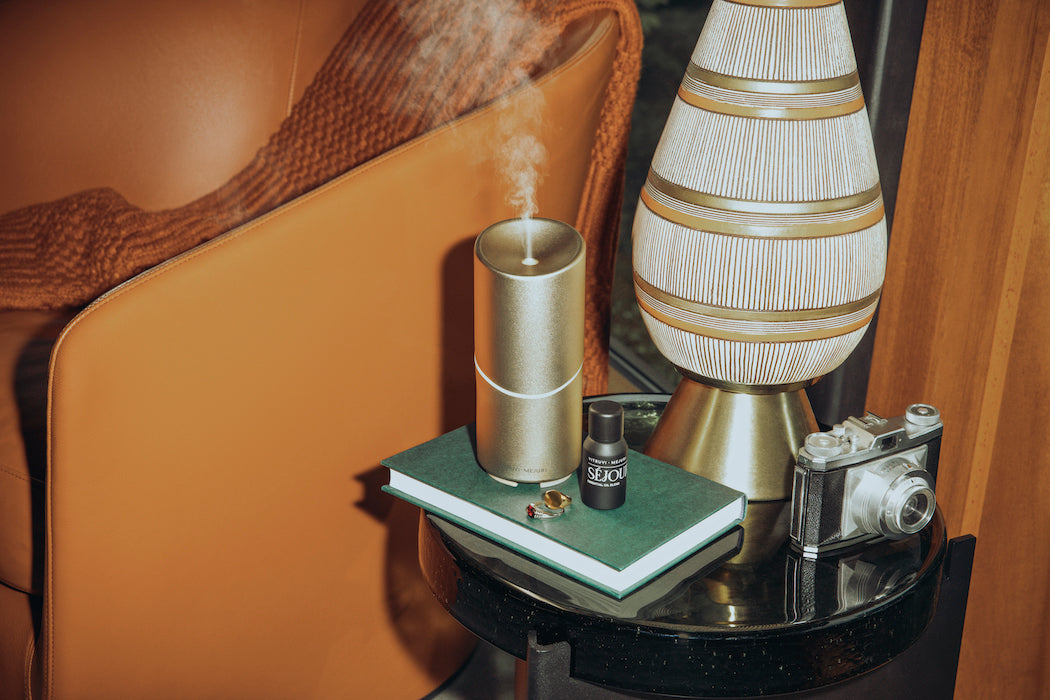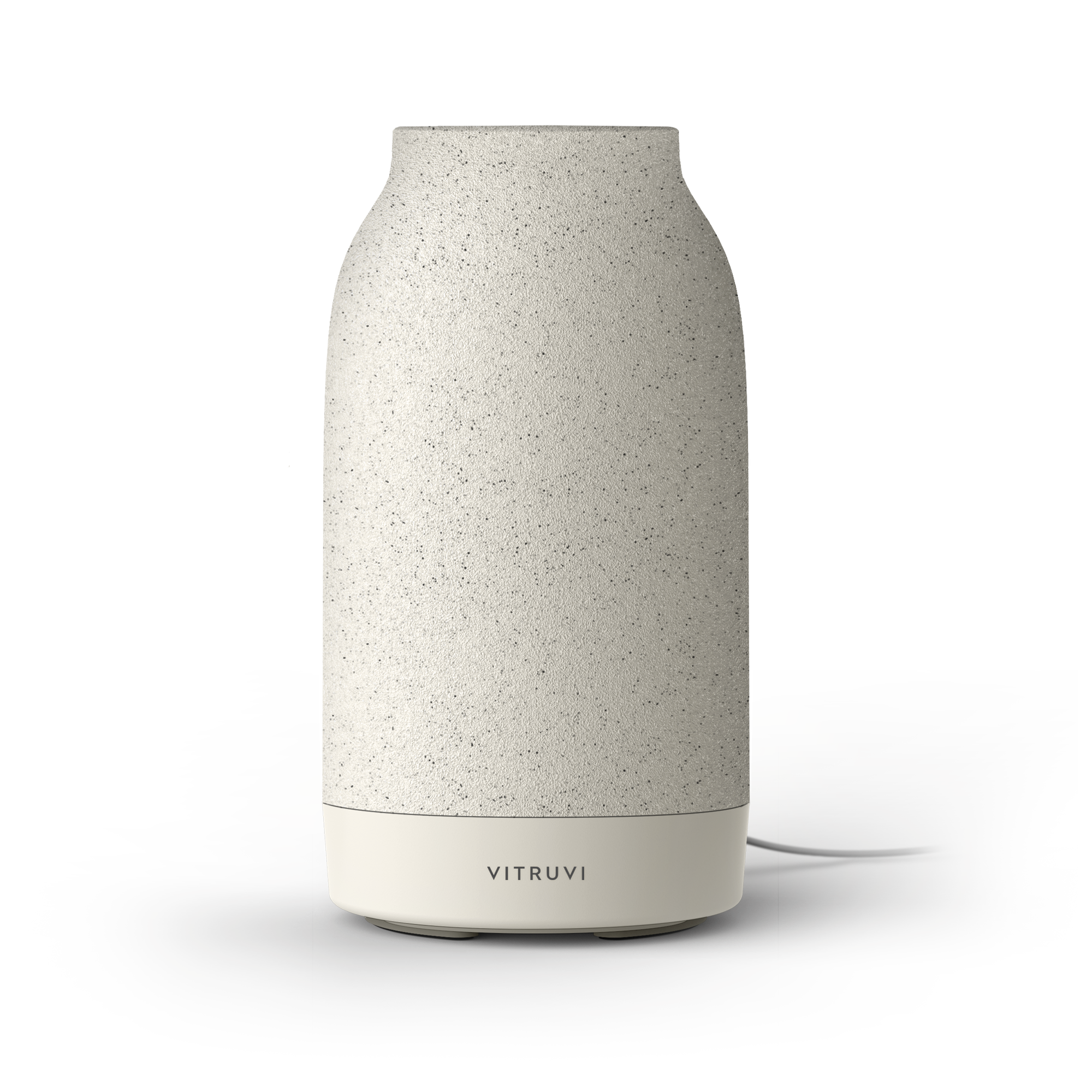“So how did you get into this very cool but very niche line of work?”
I pose this question to floral designer Carl Ostberg—known around Vancouver for his ethereal, expressive floralscapes—and instead of giving an answer, he pulls out a small pile of family photographs.
“It’s funny because I’ve been reflecting on this for the past 24 hours,” he says. “I saw my family yesterday and we were going through old photos and pulled these ones out. This one’s of me foraging; I used to pull out flowers and make little arrangements.” The photo depicts a baby Ostberg, maybe two or three years old, rocking a diaper and a t-shirt—with a bouquet of flowers in his hand. “Then I also used to do this,” he says, flipping to the next picture, “where I would style and set up my Barbies and take photos of them.” Four dolls are artfully dressed and arranged on some carpeted stairs just so. “You become disconnected with what you loved as a child, but it’s always been there,” he continues. “If you reconnect with it, it just aligns with what you’re supposed to be doing in life. Seeing this, it makes more sense.”
Many brands—including Sangre de Fruta, Heretic Parfum, and our very own vitruvi—have benefitted from Ostberg’s gentle hand. Indeed it is delicate work to artfully and effectively style florals, working in tandem with flimsy stems and wispy petals that may or may not cooperate with a desired vision.
“I think a lot of it is adaptability. Say you’re doing an installation, you’ll always go in with an idea: ‘It’s going to be this shape, this is what I’m going to do.’ But I feel like nine times out of 10, the end doesn’t look like what you came in hoping to achieve,” Ostberg reflects, sitting in his studio (we are across from the table from each other, near an open window—safety first, of course). “So it’s always that adaptability of being onsite and stepping back and looking at how it’s forming. And I guess in a way you’re surrendering to what shape it’s taking, as opposed to dictating what it’s going to look like. Which is kind of the tricky thing about working with organics. But kind of the beauty in it, as well.”
Ostberg got his start in professional floristry at Celsia in Vancouver, mostly working on arrangements for weddings and events. But soon he struck out on his own, carving his niche as a stylist for photo shoots and large-scale installations. “The easiest thing to compare it to is doodling,” he explains. “I think approaching it, you treat it as a puzzle at first—you get your colours, you get your shape—which I really enjoy, that piecing together part. And the fleeting [aspect] is the part that gets me. Like that.” He points to a wilting bouquet sitting on a side table behind me, its flowers all bowing their heads in various directions; in the middle is a drooping white poppy with crinkly petals, the showstopper of the group, even now. It’s an emotive display, and no doubt watching it change as the days go by is its own kind of poetry.
“It’s a temporary process,” Ostberg reflects. “You have this thing, but it’s not permanent. So it’s this scene you created, but then it kind of melts and disappears. Which is kind of romantic.”
Arranging has become a form of therapy for him, and while he focuses less on an intended emotion for his pieces, he definitely feels that each one has a personality. “At Celsia whenever we would [set up] something for a wedding, the whole process we’d be joking about: what’s her name, what’s her story?” he says, offering an example: “‘Her name is Lydia and she parties on the weekend.’”
I point to the wilting bouquet with the sagging white poppy, its stem curving and bending like a piece of wire. What’s its story?
“Oh my god,” Ostberg says, laughing. “She’s kind of a mess, right? Maybe a day-two mess. She’s got some good things going on; maybe all around she’s a bit of a mess, but right in the centre she’s got a good heart. I feel like nine times out of 10 it’s female names; I don’t think we ever made a male. Maybe this is one—Trevor. This is Trevor.” A bouquet of flowers named Trevor. Kind of perfect, isn’t it? Ostberg is a boy who works with flowers, after all—has since he was a kid.

